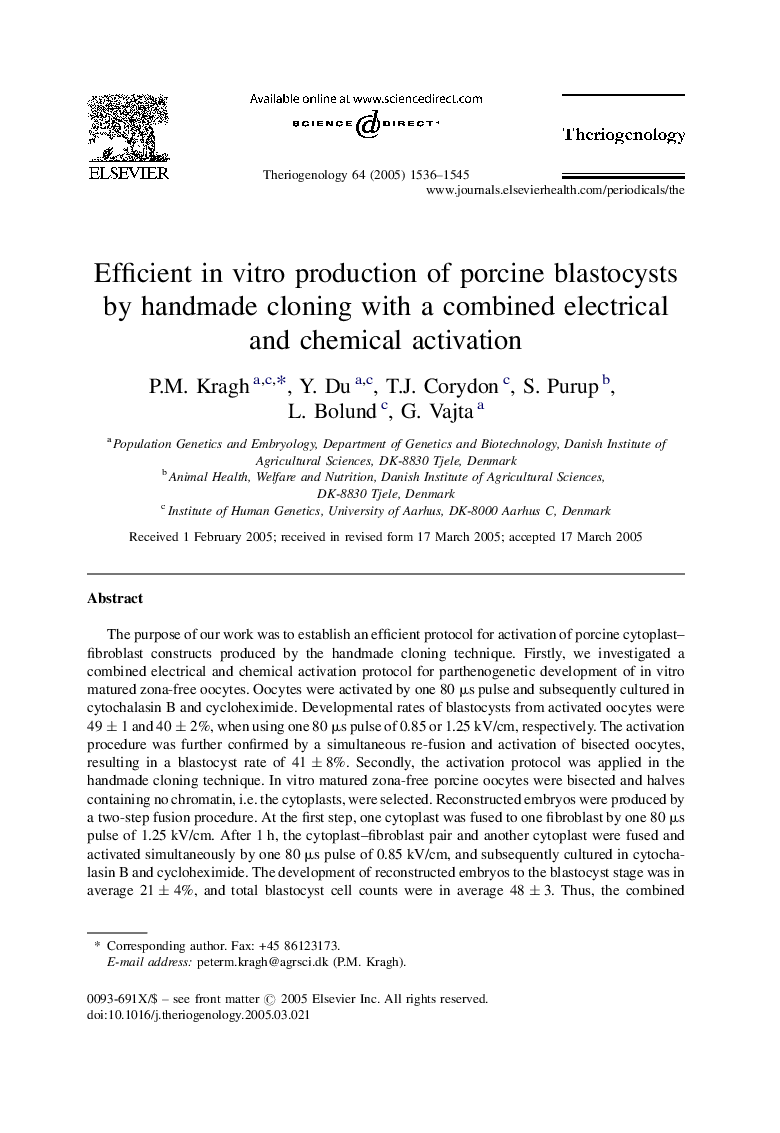| Article ID | Journal | Published Year | Pages | File Type |
|---|---|---|---|---|
| 10893882 | Theriogenology | 2005 | 10 Pages |
Abstract
The purpose of our work was to establish an efficient protocol for activation of porcine cytoplast-fibroblast constructs produced by the handmade cloning technique. Firstly, we investigated a combined electrical and chemical activation protocol for parthenogenetic development of in vitro matured zona-free oocytes. Oocytes were activated by one 80 μs pulse and subsequently cultured in cytochalasin B and cycloheximide. Developmental rates of blastocysts from activated oocytes were 49 ± 1 and 40 ± 2%, when using one 80 μs pulse of 0.85 or 1.25 kV/cm, respectively. The activation procedure was further confirmed by a simultaneous re-fusion and activation of bisected oocytes, resulting in a blastocyst rate of 41 ± 8%. Secondly, the activation protocol was applied in the handmade cloning technique. In vitro matured zona-free porcine oocytes were bisected and halves containing no chromatin, i.e. the cytoplasts, were selected. Reconstructed embryos were produced by a two-step fusion procedure. At the first step, one cytoplast was fused to one fibroblast by one 80 μs pulse of 1.25 kV/cm. After 1 h, the cytoplast-fibroblast pair and another cytoplast were fused and activated simultaneously by one 80 μs pulse of 0.85 kV/cm, and subsequently cultured in cytochalasin B and cycloheximide. The development of reconstructed embryos to the blastocyst stage was in average 21 ± 4%, and total blastocyst cell counts were in average 48 ± 3. Thus, the combined electrical and chemical activation procedure resulted in efficient blastocyst development in the handmade cloning technique.
Keywords
Related Topics
Life Sciences
Agricultural and Biological Sciences
Animal Science and Zoology
Authors
P.M. Kragh, Y. Du, T.J. Corydon, S. Purup, L. Bolund, G. Vajta,
